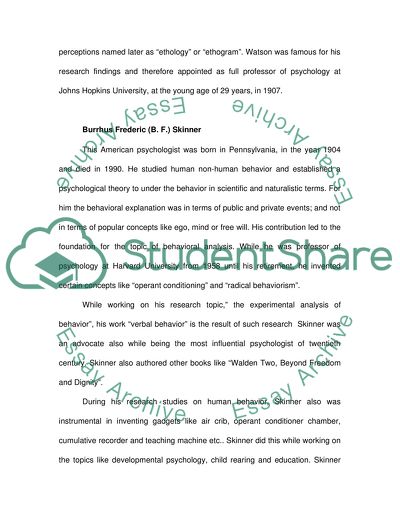Cite this document
(“Perspectives of John B. Watson, B.F. Skinner and Edward C. Tolman Essay”, n.d.)
Perspectives of John B. Watson, B.F. Skinner and Edward C. Tolman Essay. Retrieved from https://studentshare.org/philosophy/1550771-perspectives-of-john-b-watson-bf-skinner-and-edward-c-tolman
Perspectives of John B. Watson, B.F. Skinner and Edward C. Tolman Essay. Retrieved from https://studentshare.org/philosophy/1550771-perspectives-of-john-b-watson-bf-skinner-and-edward-c-tolman
(Perspectives of John B. Watson, B.F. Skinner and Edward C. Tolman Essay)
Perspectives of John B. Watson, B.F. Skinner and Edward C. Tolman Essay. https://studentshare.org/philosophy/1550771-perspectives-of-john-b-watson-bf-skinner-and-edward-c-tolman.
Perspectives of John B. Watson, B.F. Skinner and Edward C. Tolman Essay. https://studentshare.org/philosophy/1550771-perspectives-of-john-b-watson-bf-skinner-and-edward-c-tolman.
“Perspectives of John B. Watson, B.F. Skinner and Edward C. Tolman Essay”, n.d. https://studentshare.org/philosophy/1550771-perspectives-of-john-b-watson-bf-skinner-and-edward-c-tolman.


